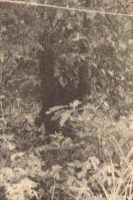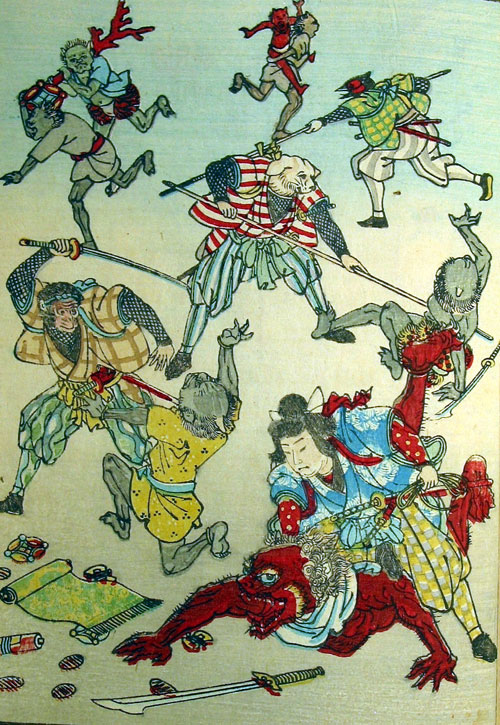Story: Three in the Morning, Four in the Evening.
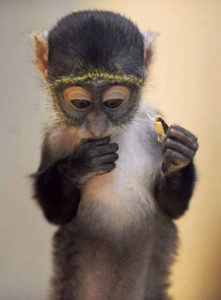
In the times of the Song Dynasty[i] in China lived a man they called Sokō, which means monkey trainer. He loved monkeys and reared a whole horde of them at his house. Sokō understood the monkey’s minds quite well, and likewise the monkeys understood their master. He even reduced the number of inhabitants in his household in order to fulfill the monkeys’ wishes. But nevertheless, soon the food was almost gone.
Sokō was about to ration the food, but he feared the monkeys would not obey him. Thus he deceived them. First he said: “I will feed you chestnuts; three now, in the morning, and four when night comes. That may be enough.” Now the horde rose outraged, so quickly he said: “I will feed you chestnuts, four now, in the morning, and three when night comes. That may be enough.” So all the monkeys threw themselves happily at his feet.[ii]
The baffling monkey
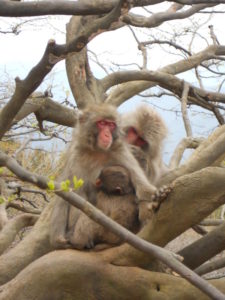
There is one thing which bugs me about monkeys in Japan: the paradoxical way they are portrayed. In some stories, like the Chinese one above, monkeys are stupid and easily led by those smarter than they are. In other contexts, such as the Chinese zodiac, the monkey is characterized as clever. There are tales of lustful ape deities who demand human sacrifice, and at the same time, monkeys are believed to exorcise evil influences. There are even gods whose avatar and messenger is a monkey. And lastly, monkeys can be funny. So, what does the monkey signify?
Emiko Ohnuki-Tierney postulates: “the monkey has sensitively expressed the changing notion of the self and other in Japanese culture; thus, by tracing the meanings of the monkey, we are able to trace the transformations of the Japanese structure of thought.”[iii] That may seem farfetched, but let’s run with it for the moment, and consider the aspects.
Monkey context: Hanuman and Sun Wukong
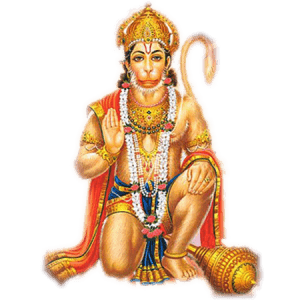
The Japanese word saru (猿), usually translated as ‘monkey’, may be as specific an animal as the Japanese macaque,[iv] or be used as a vague catch-it-all term for monkeys. Being the only monkey indigenous to Japan, Japanese macaques inhabit forested mountains everywhere on the Archipelago except Hokkaido.[v] Half-domesticated monkeys close to human dwellings and wild ones in deeper recesses of the mountains may have behaved quite differently and contributed to the ambiguous image. In addition, tales and images of other monkey and ape species came to Japan via India and China.
In media, “the monkey is portrayed initially as foolish, vain, and mischievous [but he] learns valuable lessons along the way, makes changes, and eventually gains redemption”.[vi]
An early example of this is the Hindu deity Hanuman, who initially was stupid enough to interpret the sun as a fruit he could eat, and vain enough to attempt to grab it. In addition, he liked playing tricks on people. Thus he was punished, made to forget his powers until reminded of them. Only when he redeemed himself through good deeds he was forgiven and his powers restored.[vii]
Likewise, the ancient Chinese epic Journey to the West tells of Sun Wukong (Son Gokū), “a mischievous demigod obsessed with desires”[viii] who even aspires to the throne of heaven. Like Hanuman, he is punished and does good deeds until he reaches redemption. An interesting detail: “Sun Wukong is always clothed and depicted in clearly anthropomorphic poses.”[ix] Why might that be?
The monkey as metaphor
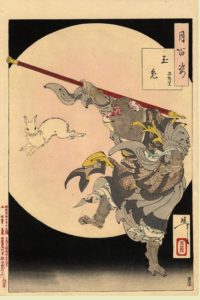
Let’s return Japanese macaques for a moment. They live in hordes and thus are social creatures, which makes them “an apt metaphor for humans”[x], especially in the rather group-based society of Japan. If one reads the tale of Sun Wukong in a similar fashion, “each stage of [the m]onkey‘s mythological journey may serve as an elaborate allegory for the evolution of the human mind.”[xi] In this vein, the monkey as a symbol was taken up by Buddhism.
To reach enlightenment, one has to overcome earthly desires. The state of confusion and greed associated with the unenlightened mind is called shin’en 心猿, “monkey mind”.[xii] Thus the stupid, greedy, vain monkey represents a stage humans need to leave behind in their journey to enlightenment. In the stories of ancient China, one encounters “the legendary ape figure characterized by animal instincts and portrayed as an abductor of women and a lustful creature”[xiii] – a sort of ancient Chinese King Kong, perhaps? Sun Wukong also had his lustful moments early in his career, for example allowing a female demon to charm him just out of sexual curiosity.[xiv]
However, the monkey cannot be simply read as a metaphor for human weakness and earthly desires. Remember the ending of the stories about divine monkeys, Hanuman and Sun Wukong? They did not stop being monkeys as their character changed. So, there must be more to this image.
Japan: monkeys as gods and divine messengers
As a result of the various influences on Japanese culture, the image of the monkey in Japan is multi-faceted. Although there are some tales of evil monkey deities who demand virgin girls as human sacrifice, mostly the image is a positive one. Monkeys serve as messengers and intermediaries between Shintō gods and humanity.[xv] The Shintō god of Mt. Hiei, Sanō, for example, has a monkey as both messenger and avatar.
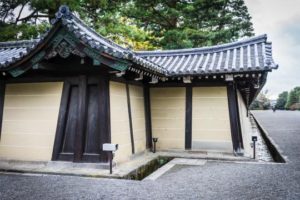
Moreover, since saru 猿is also a homonym for 去る, which means ‘to expell‘, it came to be believed that monkeys could drive out evil influences. This can be seen in conjunction with Chinese geomancy (Feng Shui) in the layout of the old imperial palace in Kyōto. Like the city itself, the palace is built according to the cardinal directions, which means one of ist corners faces Northeast. Northeast, however, was believed to be kimon 鬼門, the ‚demon gate‘, the direction from where evil influences could enter.[xvi] Thus, the circumference wall of the palace grounds was indented at the northeast corner. (SO there is no actual kimon. In addition, under its eaves was placed a statue of a monkey holding a Shintō staff used for purification rituals, to ward off evil influences. Hence it is called sarugatsuji 猿が辻 (the monkey’s crossing).
The same idea of purification and healing, in addition to their reputation as lustful, probably caused the association of monkeys with fertility, defense against smallpox, and safe childbirth. Also, monkeys are considered protectors of horses, and carved images of monkeys are sometimes found around old stables, the most prominent example being the Three Monkeys (Don’t See, Don’t Hear, Don’t Speak) at Toshōgu Shrine[xvii] in Nikko.[xviii] Later these Three Monkeys came to be associated with the Kōshin belief.
Monkeys as scapegoats: The migawari-zaru of Nara

According to the Chinese calendar, the 57th day in a 60-day cycle and the same year in a 60-year calendar, Kōshin 庚申, was particularly ominous. In Kōshin nights, three worms living in a person’s body would ascend to heaven while the person slept, and report on their sins. One possible countermeasure was to simply stay awake that night, also known as kōshin machi: the Kōshin wake. Alternatively, the people of Nara identified the god being reported to as Kōshin-san, whose messenger was a monkey. Therefore, if they tied little monkey-shaped charms to the eaves of their houses before Kōshin nights, they were safe: “the monkey (Koushin’s messenger) is punished instead.”[xix] Again the monkey represents humans as fallible, sinful beings, while at the same time playing an angelic role as divine messenger. Paradoxical, isn’t it?
Comic monkeys
Last semester in my early modern Japanese class, we translated a couple of stories from the Seisuishō 醒睡笑, a collection of humourous tales compiled by monk Anrakuan Sakuden in the early 17th century. It was the way the monkey appeared as a symbol in these funny stories which finally gave me the clue to a possible common denominator of the monkey images in Japanese culture. So, I will give you my translation of the two stories I worked on and my idea what may be the baseline of monkey symbolism in Japan.
Story: If monkey faces resemble the lord
Once lived a lord with an unusually emaciated body and dark skin. He called his most trusted retainer to him, told him to sit opposite his lord, and asked: “I have heard that everyone says my face looks like that of a monkey. Say, is this true or a lie?”
The retainer listened attentively and said: “I am honoured by your trust, my lord, to be asked this question. But who would dare say such a thing? No, people only say that the faces of monkeys resemble your own.“
When the lord heard this, he said “Well spoken. Then it must be as you say“, without the slightest indignation. In such cases, when a lord completely misunderstands their brazen words, the common people tend to say “The Lord has big ears [like a monkey]!”: He hears everything, but does nothing.
Interpretation: The monkey as Self and Other
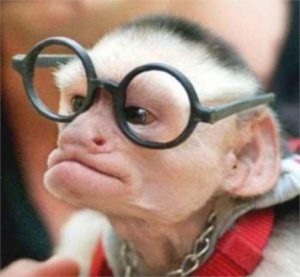
As a reason for the negative aspects of the monkey’s image, Ohnuki-Tierney suggests a form of Othering. “[S]eeing a disconcerting likeness between themselves and the monkey, the Japanese also attempt to create distance by projecting their negative side onto the monkey and turning it into a scapegoat, a laughable animal who in vain imitates humans.”[xx] In other words, it is once again human weakness, hubris, and stupidity which the monkey represents. This becomes clear in the story above, where the lord is only ‘aping’ (sarumane 猿真似 in Japanese) a ruler’s style, without understanding the situation. He does not just resemble a monkey outwardly; his stupidity and self-deluding vanity recall the characters of Hanuman and Sun Wukong before their transformation.
Already in the Man’yōshū, an ancient collection of Japanese poetry, monkeys represent ugliness.[xxi] But more than ugly, a stupid leader is dangerous for his subjects as well, as another Chinese fable featuring monkeys, 井中撈月, details. In this story, the chief monkey decides to try and grab the moon reflected in a still pool. Following his orders, the monkeys grab each others tails and form a chain from the tree branch toward the water surface, until the bough breaks under their weight and they all drown.
The stupid, ugly lord failing in his job is a comical character because he is such an average human being. The general populace can recognize such a character as one of themselves, and laugh about the familiarity – despite the hint of danger an incapable lord brings. In contrast, the next story is set in a Buddhist temple, quite removed from the life of common people.
Story: A monkey-like acolyte climbs a tree

One day, the poet Sōchō visited Kasadera temple. As he was strolling on the temple grounds, he saw a chigo, a boy acolyte, dexterously climb into a treetop. He composed the opening verse of a poem:
The acolyte climbs
up the tree as skillfully
as a monkey’s child
The acolyte answered with a closing verse:
Since a useless monk draws near
to bark at him in fury.
Interpretation: The boy’s ambiguous monkey mind
As I mentioned above, in order to reach Buddhist enlightenment, it is necessary to overcome the restless, greedy thoughts which characterize the ‘monkey mind‘. It is fitting, then, to compare a young acolyte to a monkey, even more so if he climbs a tree to escape his studies. However, the acolyte’s answer displays the cleverness characteristic of the Taoist zodiac sign of the monkey.[xxii]
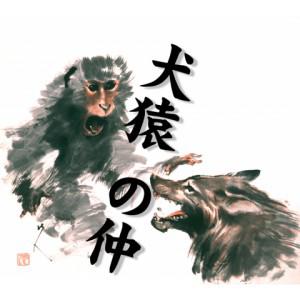
In his verse, the acolyte takes up the comparison of himself to a monkey, but turns it around. By casting the pursuing priest as a dog, he alludes to the saying “a relationship like dogs and monkeys” (ken’en no naka, 犬猿の仲), thus portraying himself as the clever monkey who solves a problem with intellect (hiding), whereas the wild dog (the priest) can only resort to violence (shouting at him).
The monkey as trickster
Such a twist in the meaning of an image between the first and the second verse was a typical feature of linked-verse poetry. Therefore, the acolyte shows off not only his wit but his learning. However, here he falls back into the trap of monkey vanity, the flaw of young Hanuman and Sun Wukong. Arrogantly he dares to pitch a verse to an actual poet while he is a mere novice, and looks down on the very monks he learned his skill from, by comparing them to dogs. So, is he clever or is he stupid and vain? Well, both, of course.
The acolyte is overestimating his own ability; he tries to act and appear very clever but fails, as the lord in the previous story did. Firstly, hiding in a tree is not of much use if you engage in clearly audible poetry contests. Secondly, by making up his clever verse, the acolyte accidentally admits to running away from his studies and/or evading punishment. In this way, he fits Ohnuki-Tierneys definition of the monkey “as a trickster, […] who uses his wits in an attempt to outsmart others”, in order “to achieve beyond [his] capacity [or] ascribed status”.[xxiii] But ultimately, as the lord above, this ‘aping’ of his betters has to fail.
Conclusion: the monkey as human
So, back to the categorization of the story as comedy. The acolyte’s reply is funny, but why? It is because the punchline is based on the ambiguity of the monkey image, which the acolyte uses to turn its meaning around. Humor is usually based on either an unexpected, surprising turn, or the recognition of ourselves. The acolyte’s answer is such a surprising turn, and in his attempt to evade an unpleasant situation, as well as in his desire to show off his skill, we can recognize ourselves.
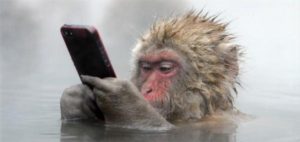
Thus, the monkey as a symbol is ambiguous because it represents humans. The Indian and Chinese monkey deities first display human weakness, then repent and redeem themselves to a level of greatness or sainthood which is the other end of the spectrum of human ability. The Japanese monkey symbolism has absorbed these stories as well as indigenous myths of monkey gods and divine messengers and created a deeply ambiguous image. This image, in turn, is very appropriate for comic use because of its ambiguity. Be it an ugly, stupid lord unfit for rule, or a self-important acolyte skilled in poetry, what we laugh about in these stories is the humanity of its protagonists. And the monkey is the symbol for this multi-faceted humanity.
Notes and References
[i] http://afe.easia.columbia.edu/song
[ii] The Chinese story朝三暮四, read in premodern Japanese and translated by me. A different version, with historical commentary, can be found here http://chinese-story-collection.blogspot.de/2010/09/three-in-morning-and-four-in-evening.html
[iii]Ohnuki-Tierney, Emiko. The Monkey as Mirror. Symbolic Transformations in Japanese History and Ritual. Princeton UP, 1987, p.74.
[iv] https://en.wikipedia.org/wiki/Japanese_macaque
[v] „Saru“ in Nihon Hyakka Daijiten日本百科大辞典, Tōkyō, 1919. Vol.3, p.945-6.
[vi] Schumacher, Mark. „Monkey in Japan“, in A to Z Photo Dictionary: Japanese Buddhist Statuary. Gods, Goddesses, Shinto Kami, Creatures and Demons. Available online via http://www.onmarkproductions.com/html/monkey-saru-koushin.html, last access 22.08.2016, 13:22; p.2.
[vii] „Monkey in Japan“, p.2.
[viii] Wang, Jing. The Story of Stone. Intertextuality, Ancient Chinese Stone Lore, and the Stone Symbolism in Dream of the Red Chamber, Water Margin, and Journey to the West. Durham & London: Duke UP, 1992, p.224.
[ix] Welch, Patricia Bjaaland. Chinese Art. A Guide to Motifs and Imagery. Tōkyō, Rutland, Singapore: Tuttle, 2008, p.137.
[x] Ohnuki-Tierney 1987, p.24.
[xi] Wang 1992, p.241.
[xii] “Monkey in Japan”, p.2.
[xiii] Wang 1992, p.222.
[xiv] Wang 1992, p.225-7.
[xv] Ohnuki-Tierney 1987, p.6
[xvi] „Monkey in Japan“, p.3.
[xvii] For tourist info, see http://www.japan-guide.com/e/e3801.html
[xviii] „Monkey in Japan“, p.3.
[xix] Monkey in Japan“, p.3.
[xx] Ohnuki-Tierney 1987, p.6.
[xxi] Ohnuki-Tierney 1987, p.53.
[xxii] Welch 2008, p.137; „The Monkey“. http://www.chinese-astrology.co.uk/monkey.html, last access 24.08.2016, 11:36.
[xxiii] Ohnuki-Tierney 1987, p.54, 58
